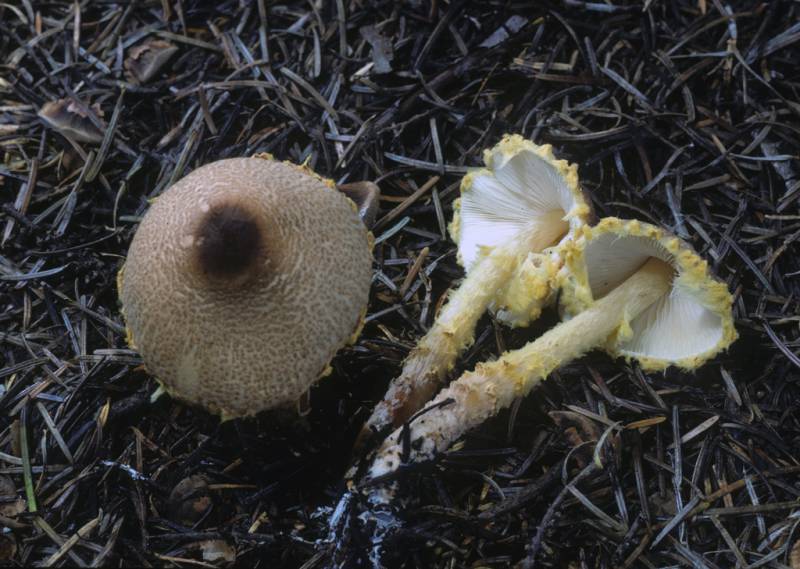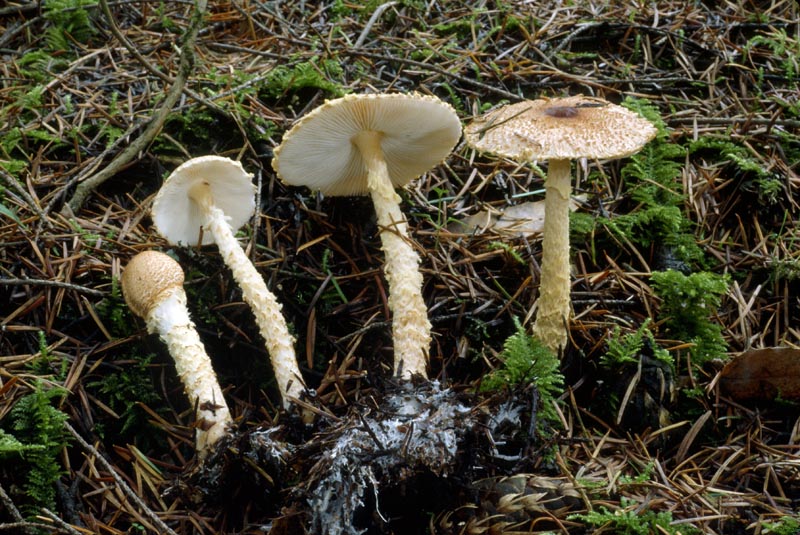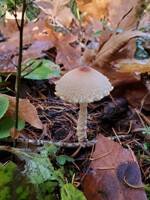Conservation Status: Not of concern
Lepiota magnispora (= L. ventriosospora Reid and L. fusispora Kauffman) both occur in the PNW, but L. magnispora is more common. The two are very similar in size and overall shaggy appearance and both often have an unpleasant odor. L. magnispora is the more variable---most often the center of the cap is distinctly brown, while the edge is whitish, but sometimes it is more uniformly brownish overall. The stipe usually is cloaked with ragged white to yellowish veil remnants. L. clypeolaria has a less contrasty cap, with a pale brown center that gradually fades toward the edge, and the veil remnants on the stipe are white, never yellow. The surest way to separate the two is by spore shape---those of L. magnispora look a bit like penguins (Else Vellinga’s apt term) in profile, or fat bellies, according to Derek Reid’s description. In contrast, those of L. clypeolaria are somewhat almond-shaped or like segments of an orange. The spores are rather large in both species, but more so in L. magnispora (15--21 vs. 11--18.5 μm in length). L. cortinarius J. Lange has somewhat the appearance of these two species but is pinkish brown to pinkish orange-brown and has short, narrow, cylindrical spores.
PNW Herbaria: Specimen records of Lepiota magnispora in the Consortium of Pacific Northwest Herbaria database.
CalPhotos: Lepiota magnispora photos.








